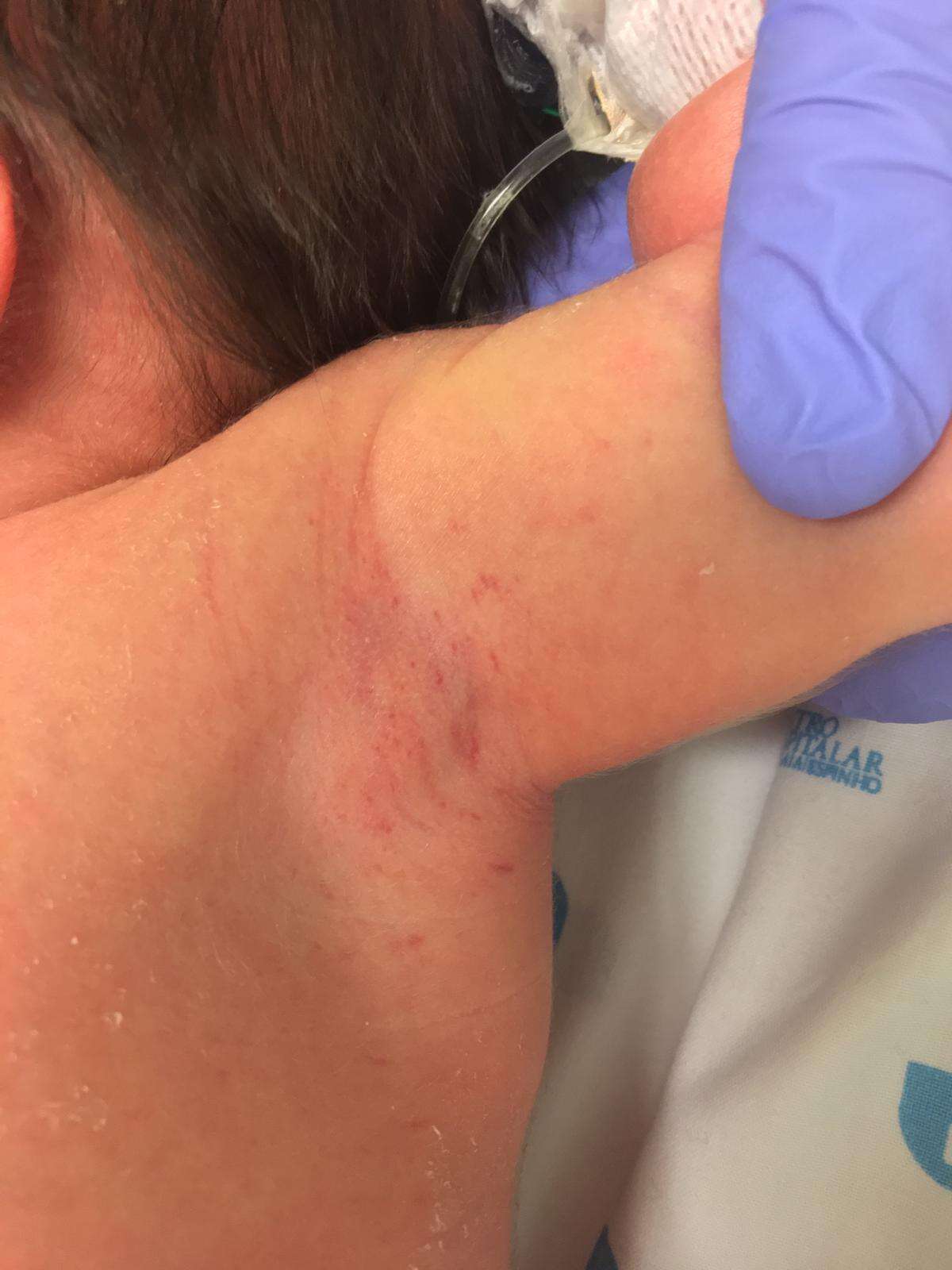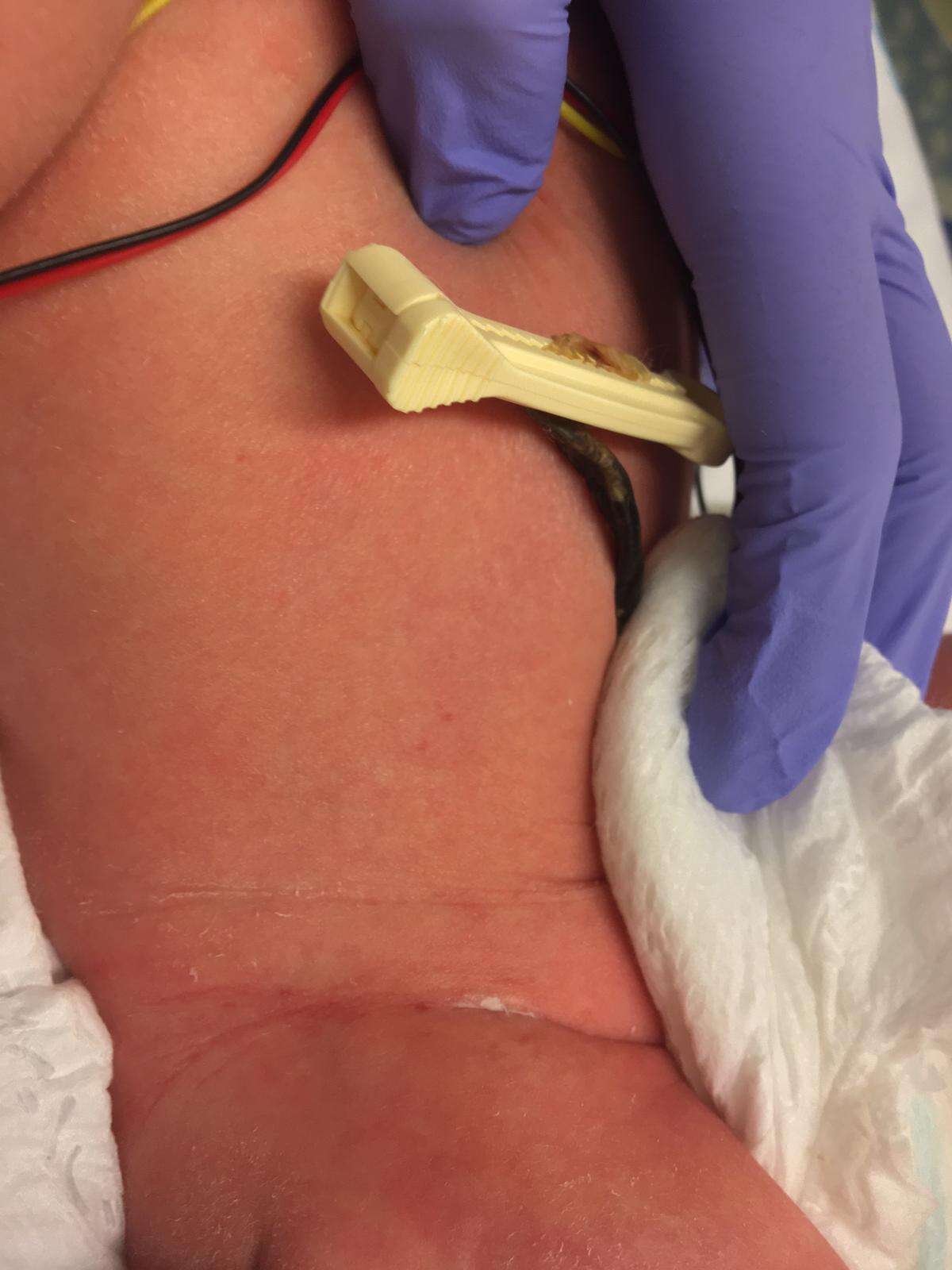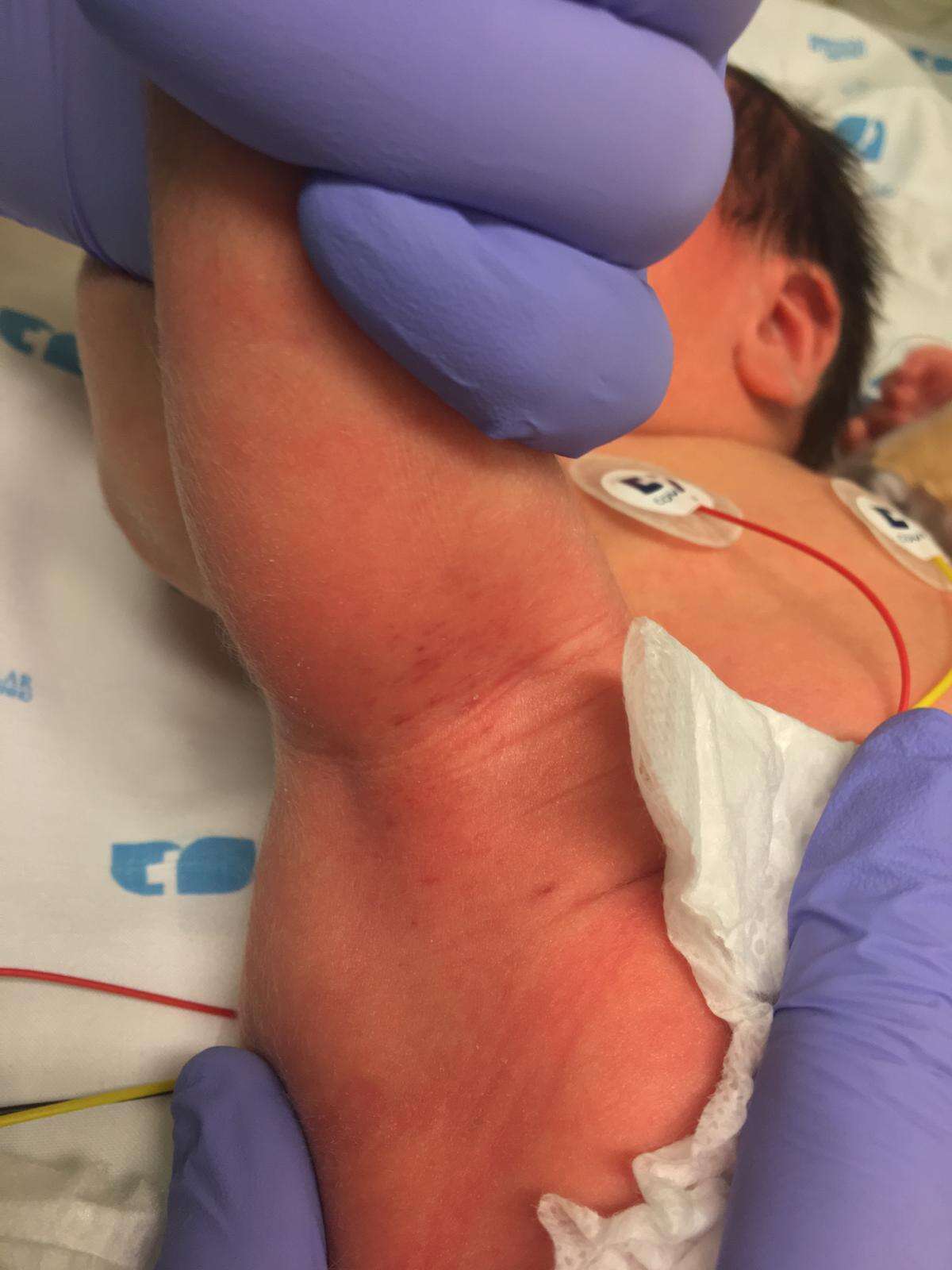
Petechiae in the Newborn: A Sign to Consider
Background: Neonatal alloimmune thrombocytopenia (NAIT) occurs when the mother forms antiplatelet antibodies against fetal platelets. Clinical findings depend on the severity of thrombocytopenia, including petechiae, bruising and bleeding, in mostly otherwise well-appearing newborns. The diagnosis is confirmed by the presence of maternal antihuman platelet antibody.
Case Report: Full-term newborn routinely examined on the first day of life. First pregnancy, without complications. Routine serologic testing and prenatal ultrasounds without alterations. Vacuum-assisted delivery, Apgar score of 9/10/10 and anthropometric measuring at the 10-50 percentile.
During observation, the newborn appeared well. Multiple petechiae were detected on the axillary, inguinal and popliteal folds and inferior area of the abdomen, with no other physical examination findings, including signs of bleeding or mucosal affection.
A blood test was performed, revealing thrombocytopenia of 28000/ul, with normal remaining blood cell lines and negative C Reactive Protein. A dose of intravenous immunoglobulin was administered given the hypothesis of NAIT. Control blood test showed a minimum platelet count of 25000/ul 9h after immunoglobulin, increasing to 44000/ul after 18h. A second dose was administered after 24 hours. Platelet count then progressively increased, with 176000/ul by the 7th day.
Diagnosis confirmation was possible by the 5th day. Parents’ study revealed antiplatelet anti-HPA-1a alloantibodies in the mother. Parents’ platelet compatibility test had a strong positive (4+) result. Platelet HPA-1 genotypes of mother, father and newborn were 1b1b, 1a1a and 1a1b, respectively.
Presently, the infant is 2 months old, is clinically well with a platelet count of 415000/ul.
Conclusion: An exhaustive physical examination of the newborn is essential, as some serious conditions may manifest with subtle alterations. In the differential diagnosis of isolated petechiae of the newborn, NAIT must be considered. The serologic and genetic testing are important to confirm diagnosis and to properly provide genetic counselling to the couple.




Powered by Eventact EMS